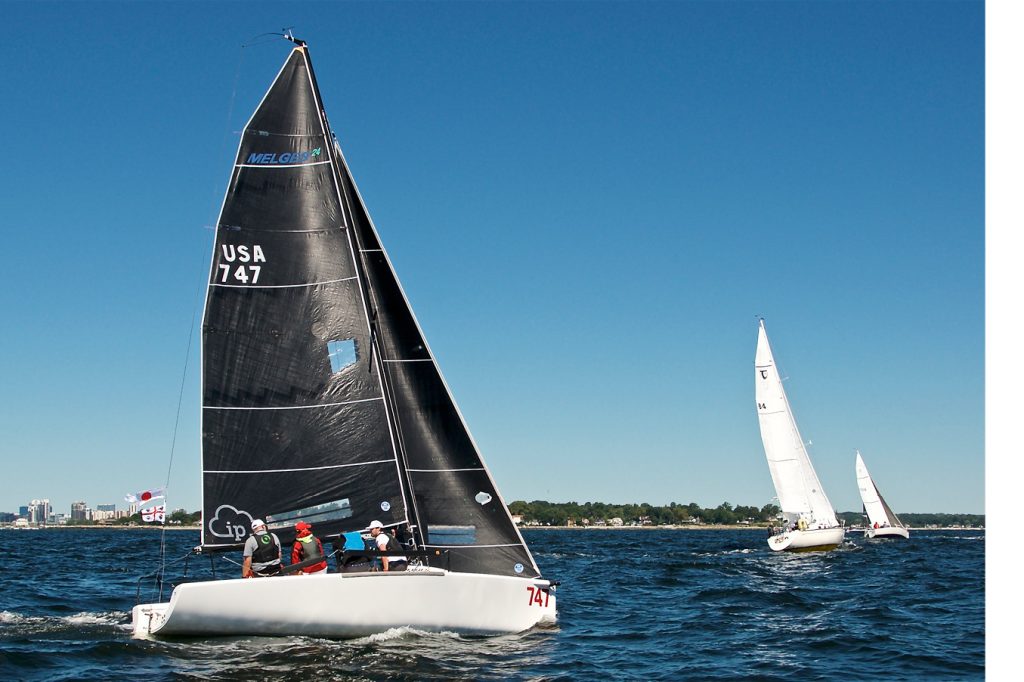Many sailors misjudge the strategic importance of current. They either make current too much of a priority when choosing their first-beat strategy, or they underestimate the effects of current as they approach the first mark. Here are some strategic tips that should help you go with the flow.
• Seeing and measuring current. Before you can include current in your strategy, you must know the current set (direction of flow) and drift (speed) across the race course. You can get this from current charts or local knowledge, but the most accurate and useful method is by sailing around the course area and making your own observations.
The best places to see current are obviously objects that are anchored or fixed to the bottom. These include the race committee boat, racing marks, navigational bouys, lobster pot buoys and so on. Look for set and drift near the starting line and first mark, plus any variations in current across the windward leg.
• How important is current? If current is equal across the course (and you don’t expect any changes), it will have no impact on your strategy except for laylines to the windward mark. In this case you should base your strategic plan on other factors.
If the current varies from side to side, then it may affect your strategy. It will have the biggest impact if 1) there is a large difference between the current on one side and current on the other; or 2) the wind is steady in both direction and velocity; or 3) you are racing in light air (where current has a relatively larger impact). If it’s windy, or if the current doesn’t vary so much across the course, or if you have puffs and shifts, then other strategic factors take priority over current.

The crew of Wes Whitmyer, Jr.’s Melges 24 Slingshot played the currents with aplomb in the 88th Vineyard Race, posting the best corrected time on the Cornfield Point Course to win the Cornfield
• Current on the first beat. When you’re racing upwind, it’s obviously beneficial to sail in areas where there is more current flowing toward the wind or less current flowing with the wind. You can often identify these areas because they have more ripples or waves. Though you would normally choose to avoid waves upwind (because they slow you down), the extra push and breeze you get from current is usually well worth it. And even if you find the waves are not due to current, they are probably caused by more wind pressure, which is also a good thing.
• Dealing with laylines. The most significant effect of current is what happens when you get near the first mark laylines. Strategically, the most common mistake in a fair current is sailing past the layline and overstanding. Tactically, the biggest pitfall in a foul current is understanding the mark and getting caught in a mess of boats. Think and look ahead so you can avoid these costly mistakes.
• Debunk current myths. Think of current as a large moving rug. You won’t gain by pinching to get the current on your lee bow. If the current is flowing across the wind, there’s no advantage to sailing the up-current tack first. And there is no strategic reason to start at the up-current end of the starting line. ■
This article originally appeared in David Dellenbaugh’s Speed & Smarts, The newsletter of how-to tips for racing sailors. If you want to sail faster and smarter, log onto SpeedandSmarts.com.
A resident of Easton, CT, Dellenbaugh was tactician and starting helmsman for America3’s successful defense of the America’s Cup in 1992. He’s a Lightning World Champion, two-time Congressional Cup winner, seven-time Thistle National Champion, two-time winner of the Canada’s Cup, three-time Prince of Wales U.S. Match Racing Champion, and a winner of the U.S. Team Racing Championships for the Hinman Trophy.
